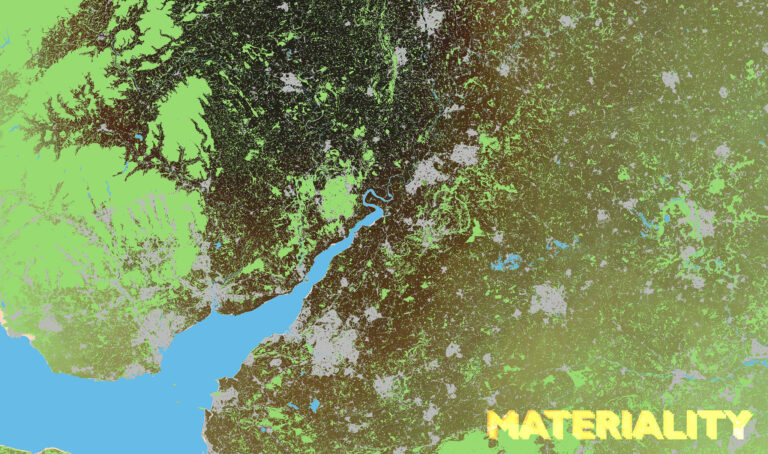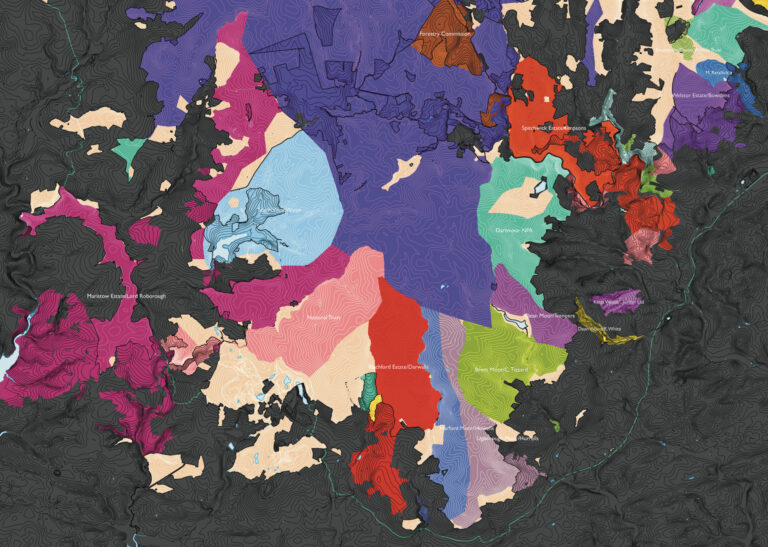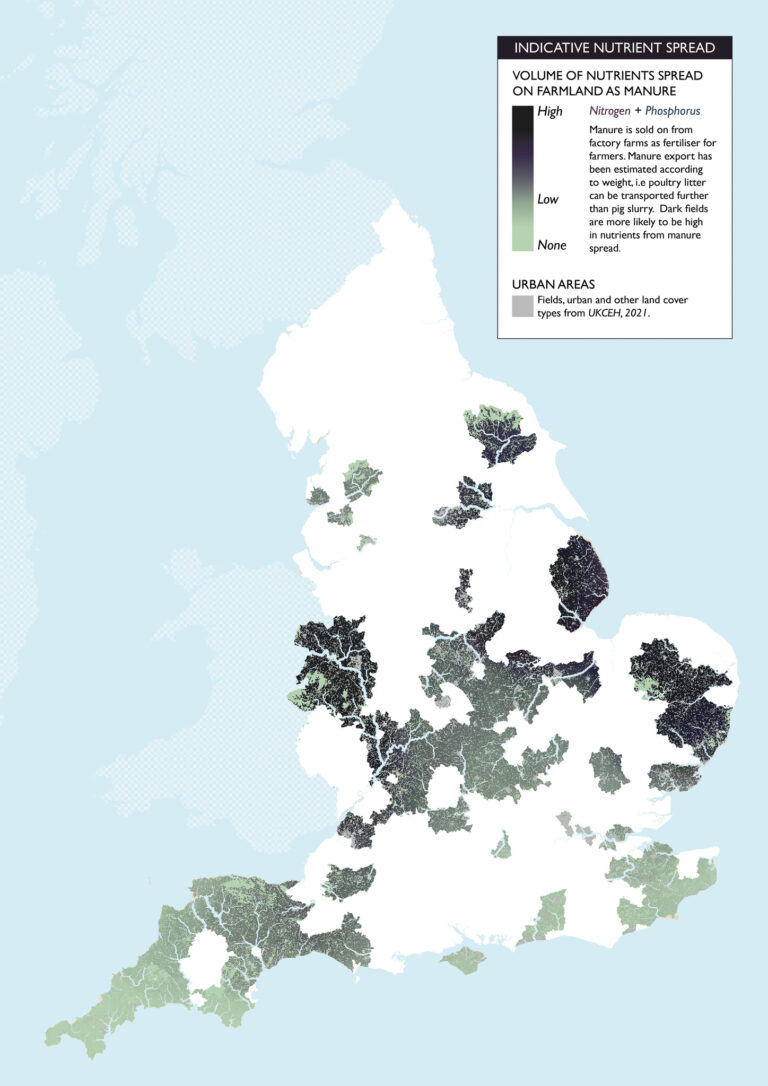The River Wye is on the verge of ecological collapse, and turns green with algae blooms each summer as a consequence of nutrient pollution. The Wye flows through the area with the most poultry factory farms in the UK.
White stripes can be found on chicken breasts sourced from the Wye catchment. These are lines of fat that have replaced failed muscle fibres, causing chronic pain for the chicken. This is likely an autoimmune reaction triggered by an overload of nutrient-rich feed in the factory farm.
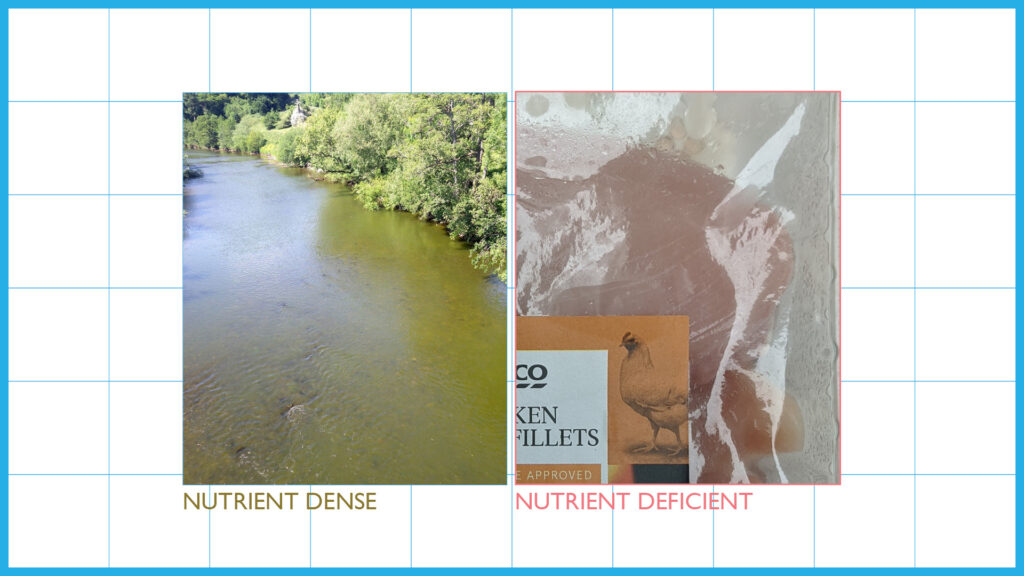
Chicken Shit/Cachu Iar investigated the factory farming supply chain that connects these two aesthetic conditions. Multimedia techniques and evidence were used to trace and reconstruct moments where harm occurs from the industrial flow of nutrients.
- Images of algae blooms were sourced from social media and mapped by location and date to reveal an increase in blooms each summer, occurring earlier and further upstream each year.
- A photograph of a farm in the supply chain was used to build an accurate 3D model of factory farming conditions. Architectural drawings were created to visualise the scale and density of chickens more accurately and effectively than photography.
- Farm location data sourced from CPRE and Friends of the River Wye was used to create a map of the areas at risk of nutrient pollution, by indicating the fields most likely to be spread with manure from factory farms.
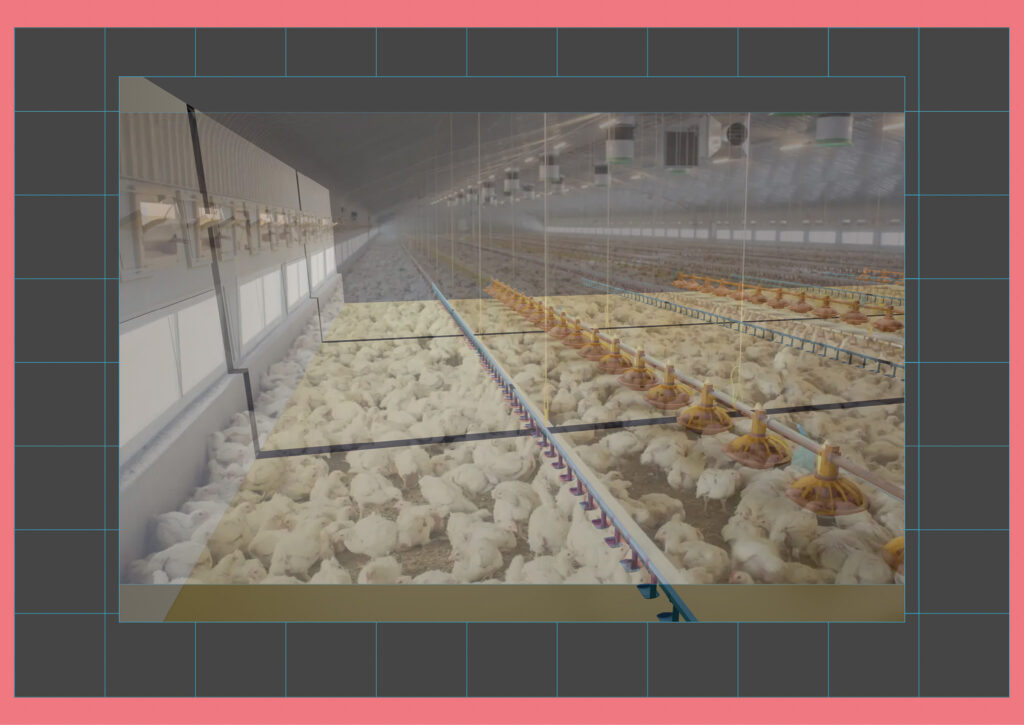

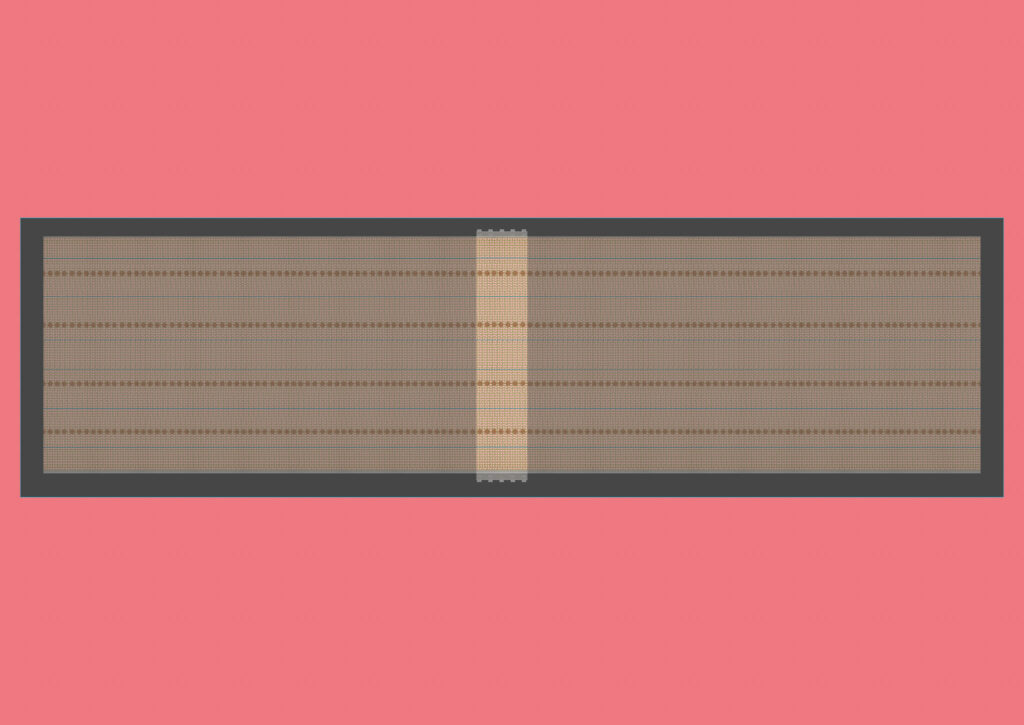
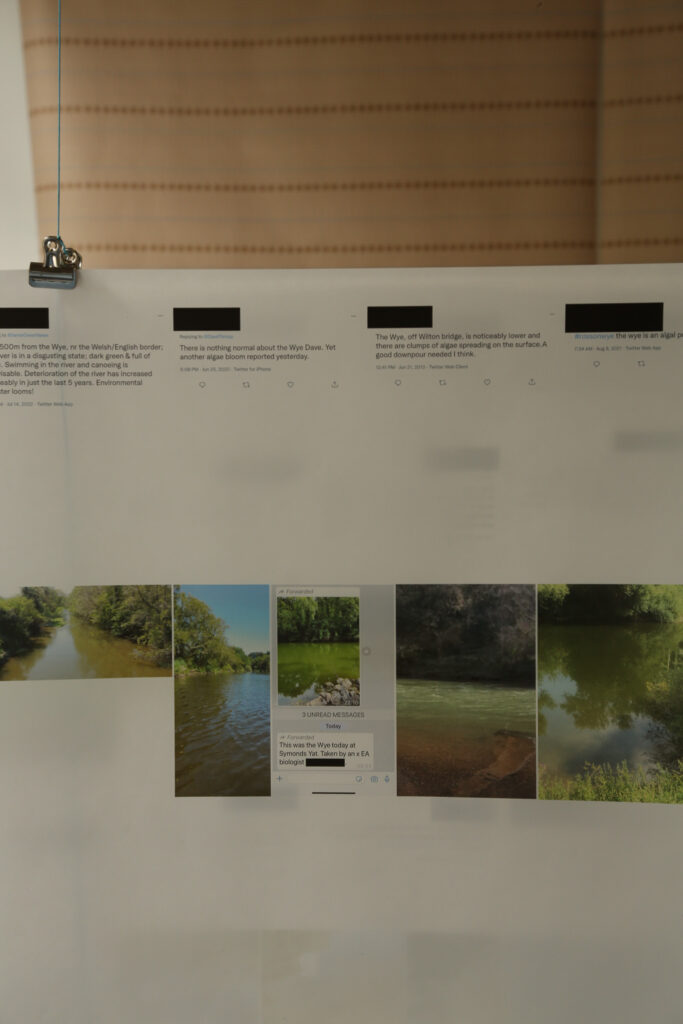
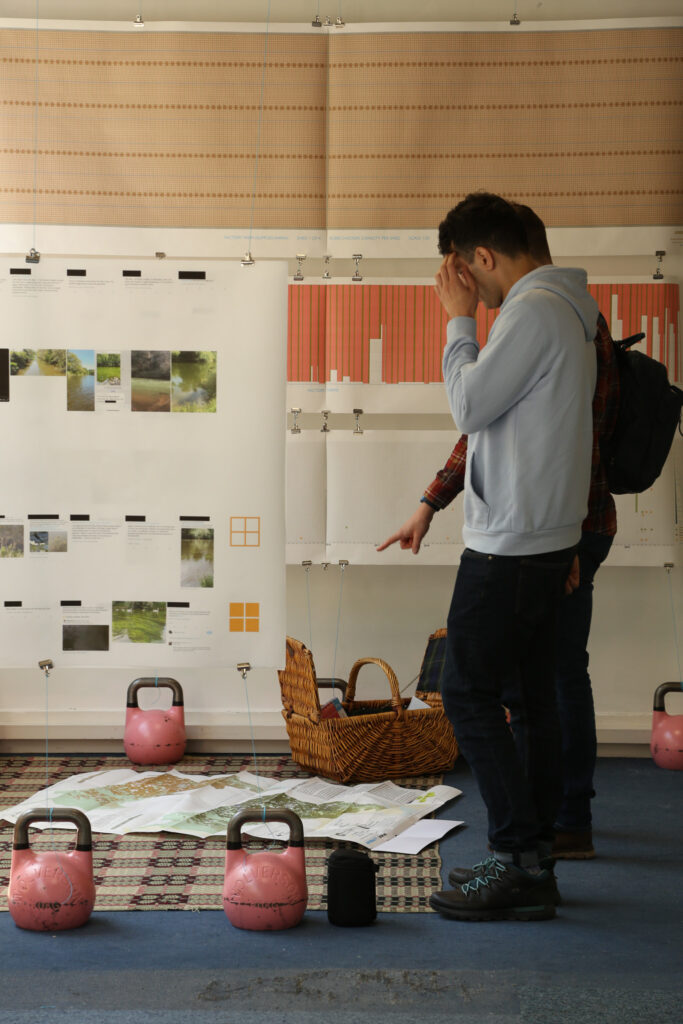
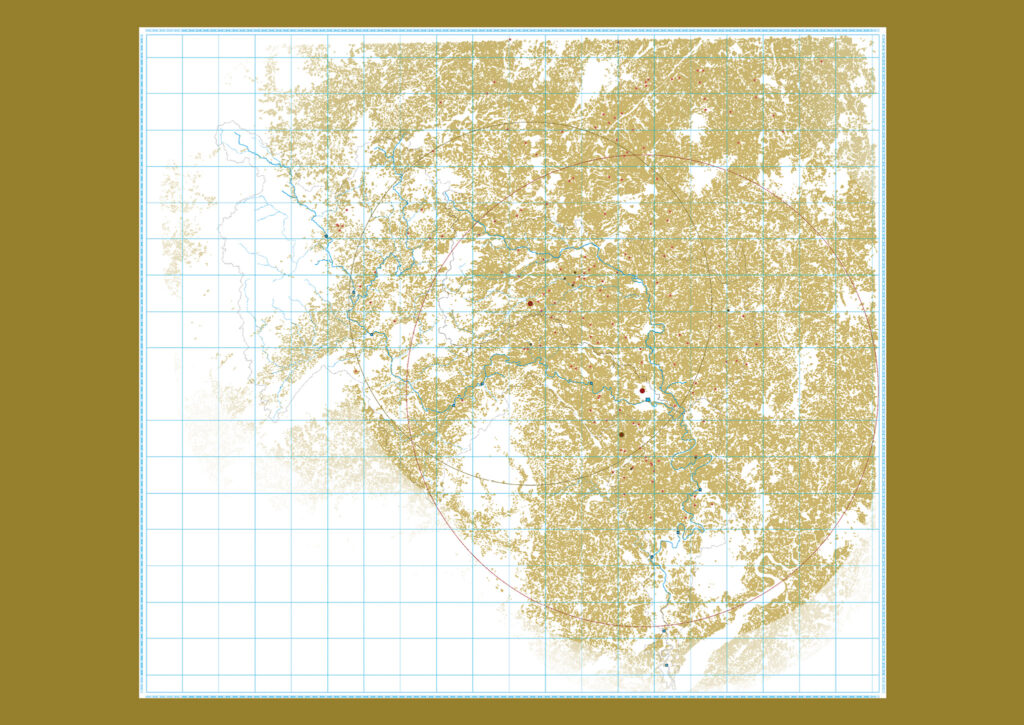
The full project can be viewed here.
Chicken Shit/Cachu Iar was adapted to audio for Farmerama Radio Podcast’s ‘Less and Better’ series, which has won the 2024 Independent Podcast Awards Environment & Natural World category.
Presented at Hay Literature Festival, Oxford Real Farming Conference and the European Permaculture Community Forum.
Exhibited at Hay Literature Festival, St Anne’s House Bristol, Goldsmiths University of London.
Published by Farmerama Radio Podcast
